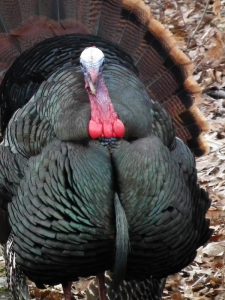Dangling Dewlaps


The Northwoods Sporting Journal is the largest hunting & fishing magazine in the Northeast.
"Just want to complement all of you on an excellent magazine. I have my subscription sent to my office and have found that clients grab the Northwoods Sporting Journal first over the dozen or so other magazines in our waiting area.
I have enclosed subscriptions for myself and five friends that I think will enjoy your magazine. I especially like the Outdoor News sections for keeping up to date with statistics and changes going on in the state."
"I used to subscribe to several outdoor magazines in the past until one day I picked up a copy of the NWSJ at LL Bean in Freeport, Maine. After reading the journal I have to say I never subscribed to any other outdoor magazine. The journal had it all and the thing is it only gets better every month! The articles are informative and very well written by what I consider experts in the field. I have to say if one does not subscribe to the journal or picks up a copy of the journal “they do not know what they are missing!” Unfortunately, I am not a resident of Maine but after reading the journal I feel I know more about your great state than my own regarding the opportunities of hunting and fishing, very good writers."
"Good morning, I have to write this…because your magazine deserves it. Every couple last winters my family has gone up to Maine after Christmas for a couple days. This always coincides with a stop at KTP, where I buy a copy of your magazine. Well, this Christmas I asked my kids for one gift, a subscription to NWSJ. I’m 57 years old, I grew up cutting and chopping cords of wood every year for my family’s two vermont castings stoves, and fishing and hunting extensively. especially loved tying my own flies and selling them in my local Connecticut hardware store when I was 12. When not doing those things I was salivating over field and stream, outdoor life, fin and feather, you understand…those were great mags, but I don’t like how they’ve changed over the years…they’re selling to the masses now, not to who I think is their core audience. You guys are different, and good different. You’re old school. You actually do not care what people think of what you’re writing, and that reeks of important values like HONESTY, COMMON SENSE, PERSONAL RESPONSIBILITY, AND KNOWLEDGE. Your articles are SO good that I refuse to read more than one at a time. no joke; I leave each issue open on my kitchen table, and read one article a day. Why? Because every single article is fantastic! I don’t want to ruin the digestion of the last one by reading the next one too quickly…yes, you guys are that good. So here it is, my first feedback; you have the best outdoor magazine I have ever read..and will continue to read it till I can’t read. "
"I enjoyed reading Ms. AuClair’s article on Mount Katahdin. I had also enjoyed the mountain and knife-edge trail twice when I was in my late 40s - early 50s. It’s an unbelievably beautiful environment. The quiet is God-like. Thanks very much. Keep up the great reading. I look forward every month to the Sporting Journal."